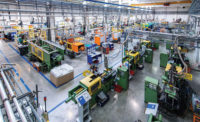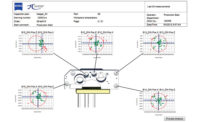SANTA MONICA, CA - Edmunds.com, an online resource for automotive information, estimated that the average automotive manufacturer incentive in the U.S. was $2,661 per vehicle sold in June 2010, down $36, or 1.3%, from May 2010, and down $196, or 6.9%, from June 2009.
"Automakers are struggling right now, and most have kept incentives flat while they try to determine how to boost sales," says Jessica Caldwell, director of industry analysis for Edmunds.com. "No big incentives programs have been announced for the July 4th holiday weekend yet, and that leads me to believe that auto sales in July won’t get off to a very strong start.”
According to Edmunds.com, combined incentives spending for domestic manufacturers averaged $3,471 per vehicle sold in June 2010, up from $3,460 in May 2010. From May 2010 to June 2010, European automakers decreased incentives spending by $19 to $2,334 per vehicle sold; Japanese automakers decreased incentives spending by $97 to $1,895 per vehicle sold; and Korean automakers decreased incentives spending by $6 to $1,775 per vehicle sold.
In June 2010, the industry's aggregate incentive spending is estimated to have totaled approximately $2.64 billion, down 11.1% from May 2010. Chrysler, Ford and General Motors spent an aggregate of $1.6 billion, or 61.3% of the total; Japanese manufacturers spent $704 million, or 26.7%; European manufacturers spent $182 million, or 6.9%; and Korean manufacturers spent $137 million, or 5.2%.
"Last June incentives were sky-high, but sales were depressed, as buyers waited for details on the Cash for Clunkers program," says Edmunds.com Senior Analyst Michelle Krebs in her report on AutoObserver.com. “If the industry was truly recovering, we would be blowing last June’s car sales numbers out of the water.”
Among vehicle segments, large trucks had the highest average incentives, $4,631 per vehicle sold, followed by premium sport car at $3,883. Sport cars had the lowest average incentives per vehicle sold, $1,371, followed by subcompact cars at $1,393. Analysis of incentives expenditures as a%age of average sticker price for each segment shows large trucks averaged the highest, 12.6%, followed by compact cars at 11.7% of sticker price. Premium luxury cars averaged the lowest with 2.2% and premium sport cars followed with 3.7% of sticker price.
Comparing all brands, in June Subaru spent the least, $533 followed by Scion at $565 per vehicle sold. At the other end of the spectrum, Saab spent the most, $5,843, followed by Cadillac at $5,505 per vehicle sold. Relative to their vehicle prices, Mercury and Saab spent the most, 15.5% and 14.5% of sticker price, respectively; while Subaru spent 2.1 and Porsche spent 2.1%.
Edmunds.com's monthly True Cost of Incentives (TCI) report takes into account all automakers' various U.S. incentives programs, including subvented interest rates and lease programs, as well as cash rebates to consumers and dealers. To ensure the greatest possible accuracy, Edmunds.com bases its calculations on sales volume, including the mix of vehicle makes and models for each month, as well as on the proportion of vehicles for which each type of incentive was used.
Get our new eMagazine delivered to your inbox every month.
Stay in the know with Quality’s comprehensive coverage of the manufacturing and metrology industries.
SIGN UP TODAY!Copyright ©2024. All Rights Reserved BNP Media.
Design, CMS, Hosting & Web Development :: ePublishing


